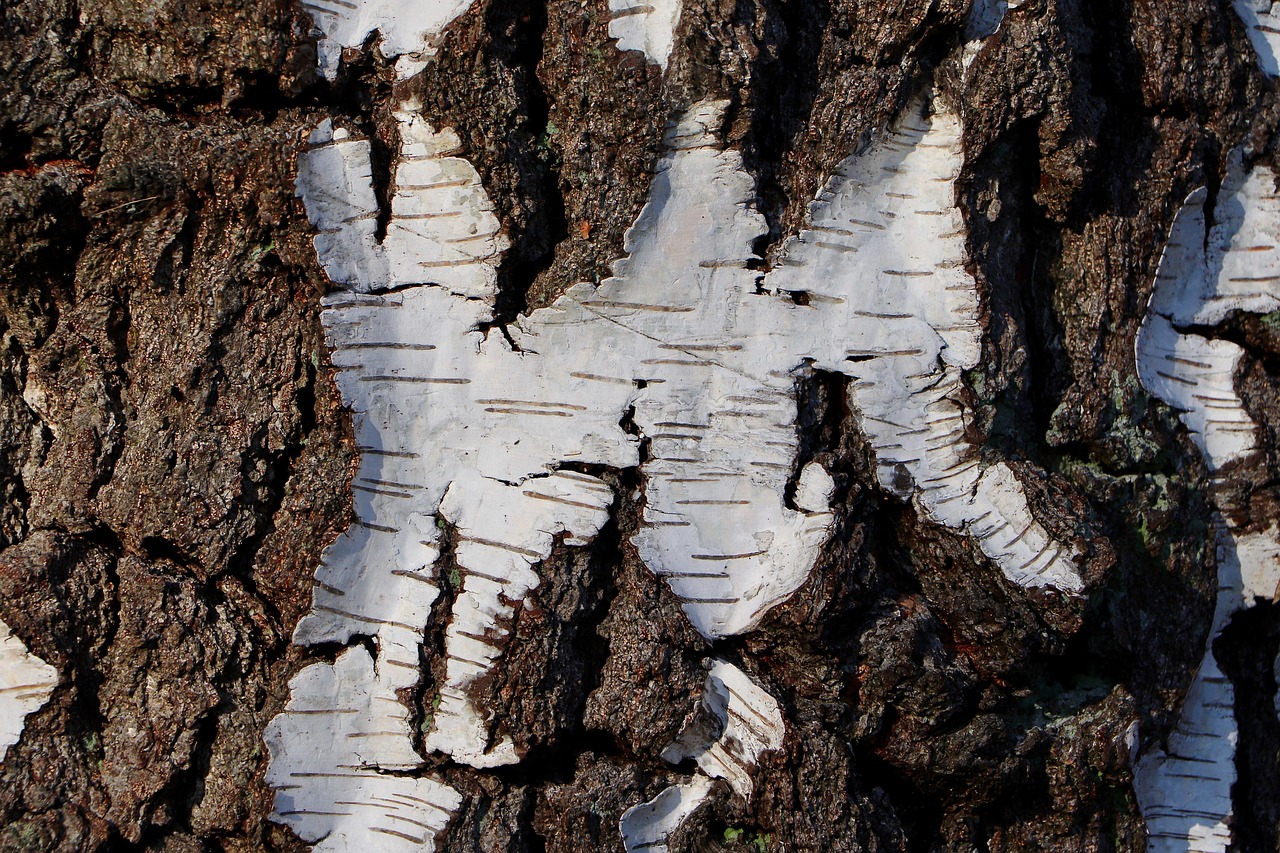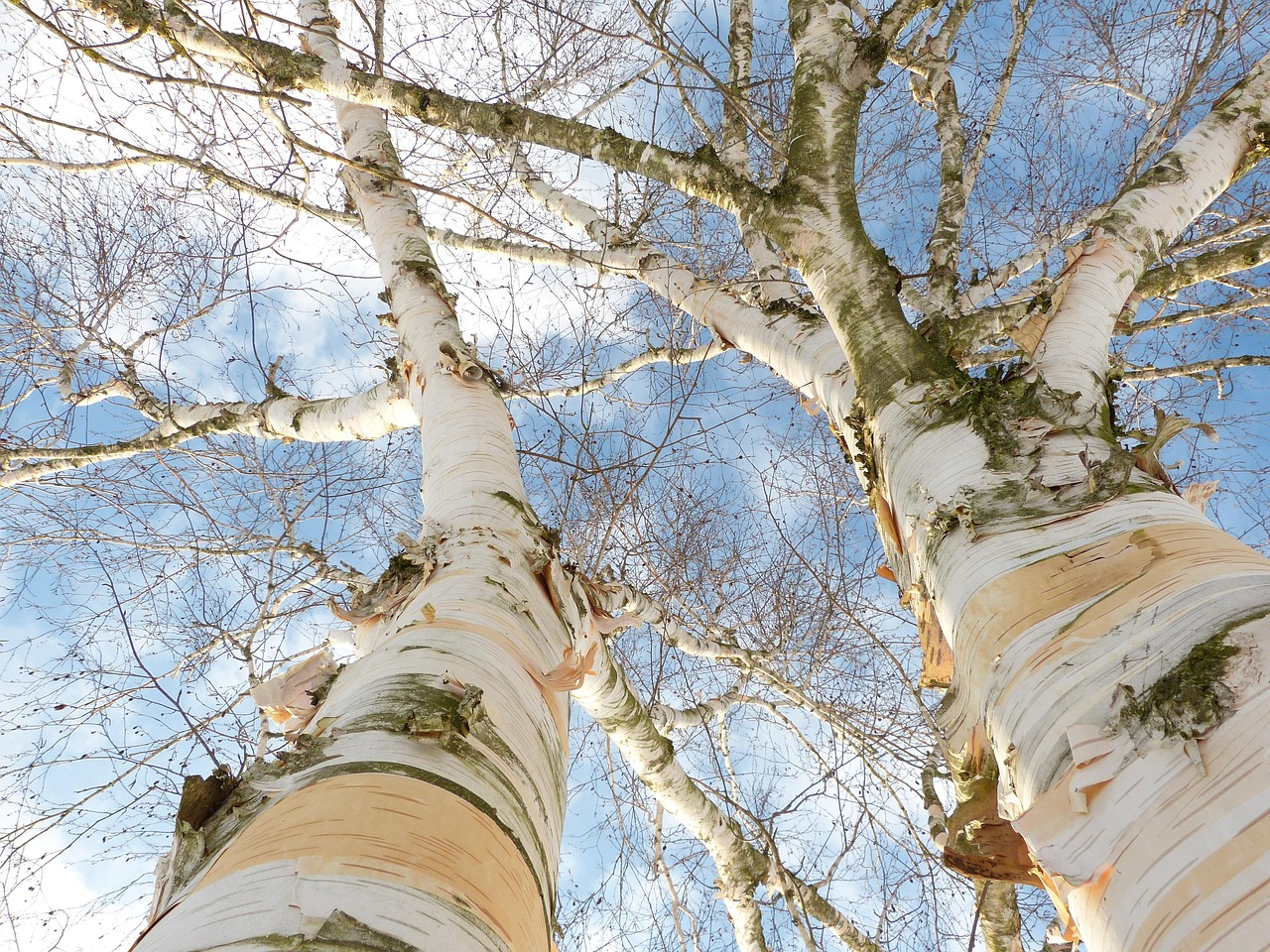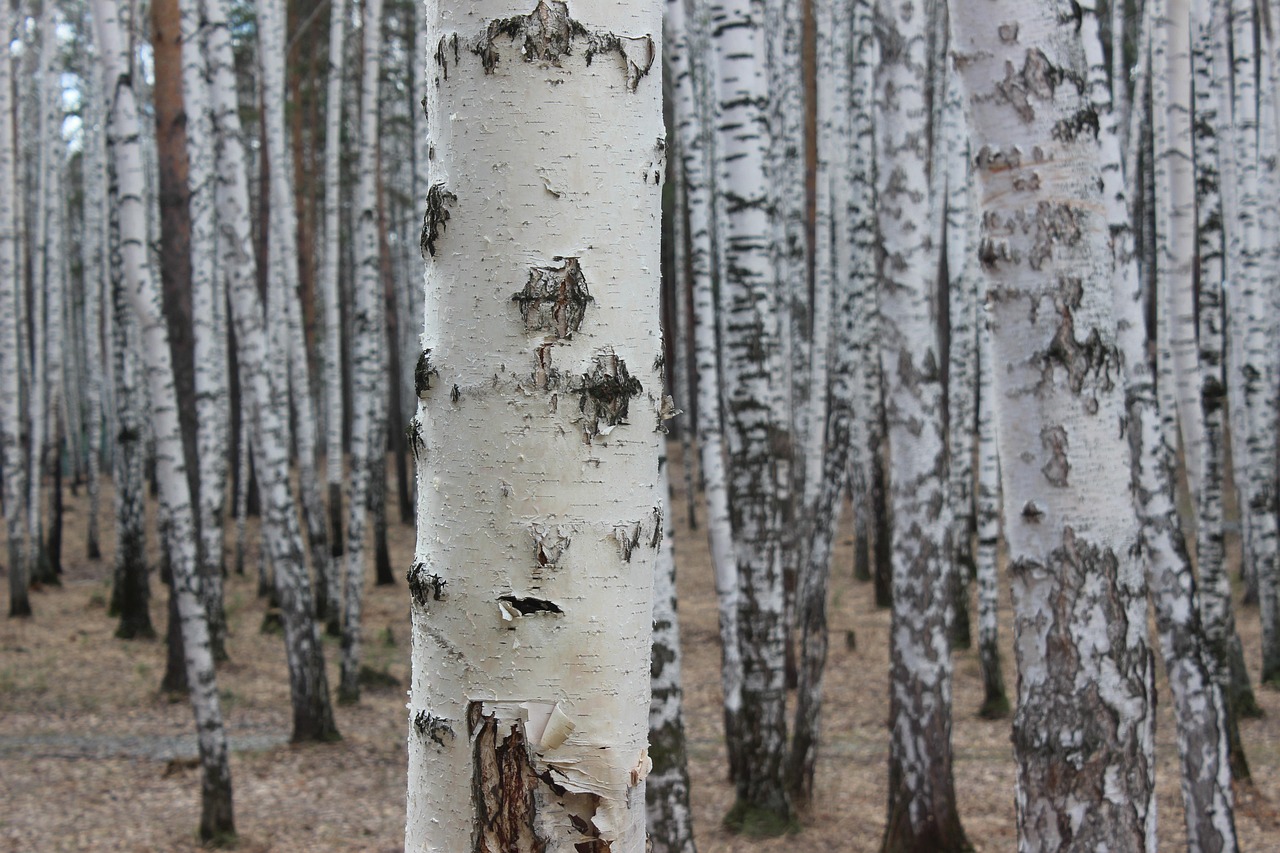Sustainable birch bark harvesting methods involve careful techniques that minimize damage to the tree, ensuring its health and longevity. The best times for harvesting are during late spring and early summer when the bark is more pliable and can be removed without harming the tree.
Understanding Birch Bark and Its Uses

Birch bark, known for its durability and flexibility, has been utilized for centuries in various cultures. Native Americans and other indigenous groups have relied on birch bark for crafting canoes, baskets, and shelter. Today, it is also used in art, crafts, and even as a natural material for modern architectural designs.
The unique properties of birch bark make it a sought-after resource. It is lightweight, resistant to water, and can be easily shaped. However, these qualities come with the responsibility of sustainable harvesting practices to ensure that birch trees continue to thrive in their natural environments.
Sustainable Harvesting Techniques
Effective sustainable harvesting of birch bark requires knowledge of both the trees and the best practices for extraction. The following techniques are essential for ensuring minimal impact:
- Selective Harvesting: Only harvest from mature trees that have sufficient bark thickness. This allows younger trees to grow and flourish.
- Seasonal Timing: Harvesting should occur in late spring or early summer when the sap begins to flow. This makes the bark easier to peel without damaging the tree.
- Careful Removal: Use sharp tools to gently cut the bark along the grain. Avoid tearing or damaging the inner bark, which can harm the tree’s ability to transport nutrients.
Best Times for Harvesting Birch Bark
The timing of birch bark harvesting significantly influences the quality of the bark and the health of the tree. The ideal conditions include:
- Late Spring: As temperatures warm up and sap starts to rise, the bark becomes more pliable.
- Early Summer: The bark is at its thickest and can be harvested with minimal effort. This period is generally optimal for harvesting.
Environmental Considerations
When harvesting birch bark, it is crucial to consider the environmental impact. Sustainable practices not only benefit the trees but also support local ecosystems. Overharvesting can lead to a decline in birch populations, which can affect wildlife that relies on these trees for habitat and food.
Moreover, maintaining a diverse forest ecosystem is vital for soil health and biodiversity. A careful approach ensures that birch trees are preserved for future generations while still allowing artisans and builders to utilize this valuable resource.
Monitoring Tree Health
After harvesting, monitoring the health of birch trees is essential. Signs of stress can include:
- Discoloration of leaves
- Reduced growth rates
- Increased vulnerability to pests
If any of these signs are observed, it may indicate that the tree needs further care or that harvesting practices should be adjusted.
Conclusion Thoughts on Birch Bark Harvesting
The practice of sustainably harvesting birch bark not only preserves this valuable resource but also fosters a deeper connection between people and nature. By understanding the best methods and times for harvesting, we can ensure that birch trees continue to thrive while providing materials for generations to come.
Historical Significance of Birch Bark
Birch bark has played a pivotal role in the lives of various cultures, particularly among Indigenous peoples of North America and Northern Europe. Historically, birch bark was not just a resource but a vital component of daily life. Its unique properties made it suitable for a wide range of applications.
For many Indigenous tribes, birch bark was used to create:
- Canoes: The lightweight and waterproof nature of birch bark made it ideal for crafting canoes that could navigate through rivers and lakes.
- Containers: Various containers for storing food and other materials were made from birch bark, ensuring durability and ease of transport.
- Housing: Birch bark was often used to cover shelters, providing insulation and protection from the elements.
- Art and Craft: Intricate designs were created on birch bark for artistic purposes, showcasing its versatility.
Modern Applications of Birch Bark
In contemporary settings, birch bark is gaining renewed interest for its aesthetic and functional qualities. Artists and designers are exploring innovative uses for birch bark that respect traditional practices while incorporating modern techniques.
Some modern applications include:
- Interior Design: Birch bark is utilized as wall coverings, accent pieces, and furniture, adding a natural element to interior spaces.
- Crafts and Textiles: Artisans create unique crafts, such as jewelry and handbags, using birch bark, highlighting its beauty and sustainability.
- Health Products: The natural properties of birch bark have led to its use in health-related products, including teas and natural remedies.
The Process of Birch Bark Harvesting
The process of harvesting birch bark requires skill and precision to ensure the health of the tree while obtaining quality material. Here are the essential steps involved in the harvesting process:
- Selecting the Tree: Choose healthy, mature birch trees with a thick outer bark. This ensures that the tree can withstand the removal of some bark.
- Preparation: Gather necessary tools such as a sharp knife or peeling tool. Make sure to wear gloves to protect your hands from sharp edges.
- Tapping the Bark: Start by making a shallow incision around the circumference of the tree about one foot above the ground. This incision helps loosen the bark.
- Peeling: Carefully peel away the bark from the tree, following the natural grain. Take care not to damage the inner bark.
- Finishing Touches: Trim any rough edges after harvesting to prepare the bark for storage or immediate use.
Ethical Considerations in Birch Bark Harvesting

As interest in birch bark grows, ethical considerations become increasingly important. Sustainable harvesting practices must be prioritized to ensure that birch trees can continue to thrive in their ecosystems.
Some ethical guidelines include:
- Harvesting Limits: Set limits on how much bark can be harvested from each tree to prevent overexploitation.
- Cultural Respect: Acknowledge and respect the traditional knowledge of Indigenous peoples regarding birch bark harvesting practices.
- Community Engagement: Involve local communities in decision-making processes related to harvesting practices to promote sustainable use and conservation efforts.
The Future of Birch Bark Harvesting
The future of birch bark harvesting looks promising as awareness about sustainable practices grows. Research into innovative harvesting methods and applications continues to expand. Additionally, educational programs are being developed to teach sustainable harvesting techniques to new generations.
This ongoing commitment to sustainability not only benefits the birch trees but also supports artisans and communities who rely on this natural resource for their livelihoods.
Educational Initiatives for Sustainable Harvesting
As interest in birch bark harvesting grows, educational initiatives are essential to ensure that sustainable practices become the norm. Various organizations and communities are working to develop programs that teach both traditional and modern techniques for harvesting birch bark responsibly.

These initiatives often include:
- Workshops: Hands-on workshops provide participants with practical experience in sustainable harvesting methods. These sessions are often led by experts or experienced harvesters who share their knowledge and skills.
- Online Courses: With the rise of digital learning, online courses have become a popular way to reach a wider audience. These courses cover topics ranging from the ecological importance of birch trees to the intricacies of harvesting techniques.
- Community Events: Local festivals and gatherings often feature demonstrations of birch bark harvesting. These events foster community engagement and promote awareness about sustainability.
The Role of Technology in Birch Bark Harvesting
Technology is playing an increasingly important role in enhancing sustainable birch bark harvesting practices. Innovative tools and techniques are being developed to improve the efficiency and effectiveness of harvesting while minimizing environmental impact.
Some technological advancements include:
- Mobile Apps: Applications that help identify suitable trees for harvesting can aid harvesters in making informed decisions. These apps can provide data on tree health and optimal harvesting times.
- Sustainable Tools: New tools designed specifically for birch bark harvesting reduce damage to trees. For example, specialized knives can cut through bark with minimal impact on the inner layers.
- Remote Sensing: Technologies such as satellite imagery and drones can be utilized to monitor forest health and track changes in birch populations over time.
Cultural Revitalization Through Birch Bark
The practice of harvesting birch bark is not only an economic activity but also a vital part of cultural heritage for many Indigenous communities. Revitalizing these practices can strengthen cultural identity and community ties.
Revitalization efforts may include:
- Storytelling: Sharing stories and traditions associated with birch bark harvesting helps preserve cultural knowledge and promotes intergenerational learning.
- Artistic Expression: Encouraging artists to create works that reflect the significance of birch bark in their culture fosters pride and awareness among community members.
- Collaborative Projects: Joint initiatives between Indigenous communities and conservation organizations can lead to mutually beneficial outcomes, ensuring that traditional practices are respected while promoting sustainability.
The Economic Impact of Sustainable Birch Bark Harvesting
Sustainable birch bark harvesting can have a positive economic impact on local communities. By promoting responsible practices, communities can create a market for birch bark products that supports artisans and local businesses.
The economic benefits include:
- Job Creation: Sustainable harvesting initiatives can lead to job opportunities in both harvesting and processing birch bark products.
- Market Development: By creating a demand for sustainably harvested birch bark, communities can develop new markets for their products, increasing income potential.
- Tourism Opportunities: Workshops and cultural experiences related to birch bark harvesting can attract tourists, providing additional revenue streams for local economies.
The Ecological Benefits of Sustainable Practices

Sustainable birch bark harvesting practices contribute positively to the environment. By prioritizing the health of birch trees and their ecosystems, these methods help maintain biodiversity and ecological balance.
The ecological benefits include:
- Habitat Preservation: Healthy birch trees provide habitat for various wildlife species. Sustainable practices ensure that these habitats remain intact.
- Soil Health Improvement: Birch trees play a role in maintaining soil quality by preventing erosion and supporting nutrient cycling.
- Biodiversity Support: Maintaining healthy birch populations contributes to the overall diversity of forest ecosystems, which is critical for resilience against climate change.
Challenges Facing Sustainable Birch Bark Harvesting
Despite the benefits, several challenges must be addressed to ensure the future of sustainable birch bark harvesting. These challenges include:
- Climate Change: Changes in climate patterns can affect the health of birch trees and alter optimal harvesting times.
- Pest Infestations: Increased vulnerability to pests due to environmental stress can lead to tree decline and reduced availability of quality bark.
- Market Competition: As demand for natural materials grows, competition among harvesters can lead to unsustainable practices if not managed properly.
By understanding these challenges, stakeholders can work collaboratively to develop strategies that promote sustainability while addressing emerging threats to birch tree populations.
Strategies for Overcoming Challenges
To effectively address the challenges facing sustainable birch bark harvesting, a multi-faceted approach is essential. Collaboration among stakeholders, including local communities, conservation organizations, researchers, and policymakers, can lead to innovative solutions that prioritize sustainability and ecological health.
Strategies may include:
- Research and Monitoring: Ongoing research into the effects of climate change on birch trees and their ecosystems can provide valuable insights. Monitoring programs can track tree health and pest populations, allowing for timely interventions.
- Community Education: Educating local communities about sustainable practices and the importance of biodiversity can empower individuals to make informed decisions regarding birch bark harvesting.
- Certification Programs: Establishing certification programs for sustainably harvested birch bark can help consumers make responsible choices while incentivizing harvesters to adhere to sustainable practices.
- Policy Development: Advocating for policies that support sustainable forestry and protect birch tree habitats is crucial. This includes land management practices that consider the long-term health of birch populations.
The Importance of Collaboration
Collaboration is vital in overcoming the challenges associated with sustainable birch bark harvesting. By bringing together diverse perspectives and expertise, stakeholders can develop comprehensive strategies that benefit both the environment and local communities.
Collaboration efforts may involve:
- Partnerships with Indigenous Communities: Working alongside Indigenous peoples ensures respect for traditional knowledge and practices. Their insights can significantly enhance sustainable harvesting methods.
- Engagement with Scientists: Collaborating with scientists can facilitate research that informs best practices for managing birch tree populations in changing climates.
- Networking among Artisans: Building networks among artisans can promote best practices in using birch bark sustainably while sharing resources and knowledge.
Final Thoughts
The journey toward sustainable birch bark harvesting is both a challenge and an opportunity. As awareness about the ecological and cultural significance of birch trees grows, so does the responsibility to protect them for future generations. Sustainable practices are not only essential for the trees’ health but also for preserving the cultural heritage associated with birch bark.
By implementing sustainable harvesting methods, engaging in community education, and fostering collaboration among various stakeholders, we can ensure that birch bark continues to be a valuable resource. This commitment to sustainability will not only benefit local economies but also contribute to the resilience of forest ecosystems in the face of climate change.
The future of birch bark harvesting lies in our hands. Through responsible actions and dedicated efforts, we can create a balanced approach that honors nature while meeting the needs of artisans, communities, and ecosystems alike. The path forward is one of respect, collaboration, and commitment to sustainability.
